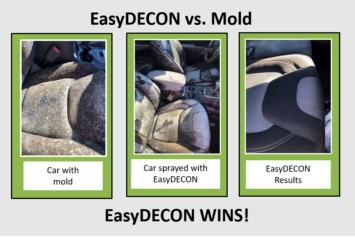 Mold is a type of fungus that is found just about everywhere and plays an important role in nature where it breaks down plant and animal matter. Molds thrive on moisture and reproduce by means of tiny, lightweight spores that travel through the air. Inhalation is the primary way that mold is introduced into the human body, although exposure can also occur through the skin or one?s diet. We are all exposed to molds every day, and they are generally not harmful to healthy humans.
Mold is a type of fungus that is found just about everywhere and plays an important role in nature where it breaks down plant and animal matter. Molds thrive on moisture and reproduce by means of tiny, lightweight spores that travel through the air. Inhalation is the primary way that mold is introduced into the human body, although exposure can also occur through the skin or one?s diet. We are all exposed to molds every day, and they are generally not harmful to healthy humans.
For many people, such as those suffering from allergies and asthma, molds have the potential of causing symptoms such as nasal and sinus congestion, eye irritation, sore throat, wheezing, headache, chronic cough and skin rash. Those with mold allergies and/or chronic lung conditions such as asthma are at risk for more severe symptoms and complications. After contact with certain molds, individuals with chronic respiratory disease may have difficulty breathing, and people who are immunocompromised may be at risk for lung infection. A study conducted by NIEHS-funded scientists shows that mold exposure during the first year of life may increase the risk of childhood asthma.
Molds reproduce by forming tiny spores that are not visible to the naked eye. These spores travel through the air and when they land on a surface where moisture is present, can start to grow. Mold spores can attach to many materials including carpet, fabrics, paper and wood, preferring spaces having lots of moisture and little light.
Occurrences such as flooding, and sewage backup exacerbate the rate of natural mold growth and must be addressed quickly and effectively to reduce associated problems. The following steps should be followed should mold growth be identified:
- Dry wet areas
- Repair any leaks and seepage
- Get the mold out ? use EasyDECON? to destroy mold, seen and unseen!
The first issue that must be addressed is often biofilms. Biofilms form when microorganisms such as mold and bacteria adhere to a surface in a moist environment and begin to reproduce. These microorganisms form an attachment to the surface by secreting a slimy, glue-like substance that can be extremely difficult to remove. ??Often there is staining associated with mold growth which is actually the buildup of biofilm on surfaces.
Cleaning will help prevent the forming of these biofilms; however, decontamination is required to destroy the biofilm and reduce the likelihood of future regrowth of the mold.? By using the EasyDECON? DF200 you are able to destroy the biofilm and break through and break up the proteins in the spore allowing the hydrogen peroxide to penetrate the lipid layer destroying the DNA.??
The bottom line is that mold in your home or other water damaged buildings doesn?t always cause health problems, but it should always be removed. Mold can cause physical damage to a building, and can at a minimum lead to eye, nose, lung and throat irritation.
EasyDECON? the leader in infection prevention and control.

